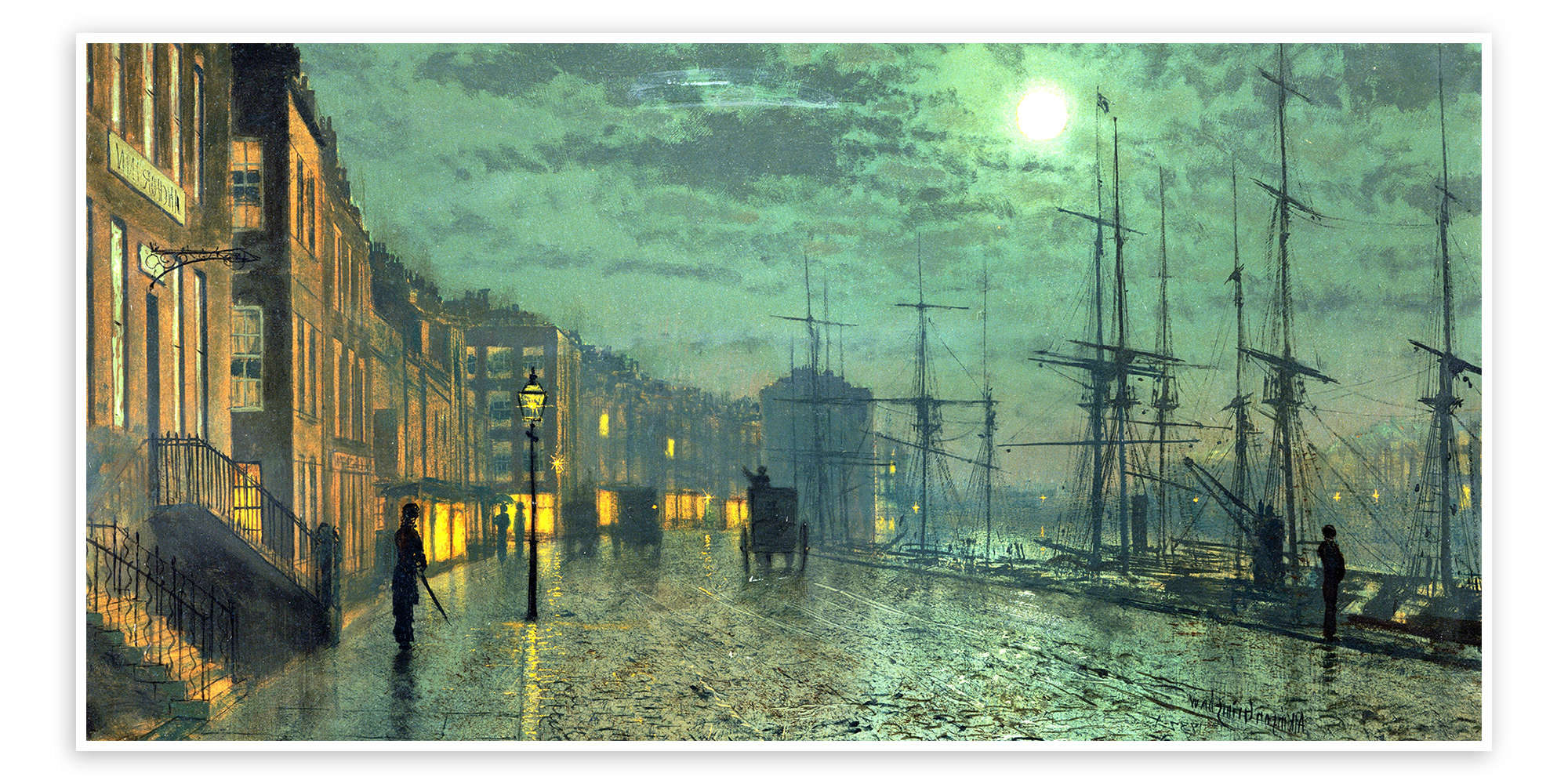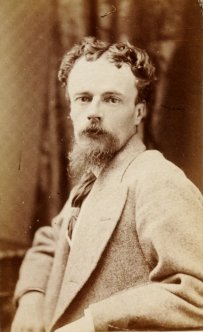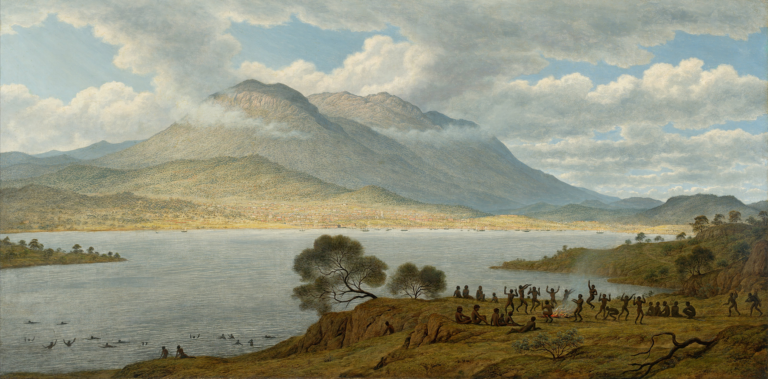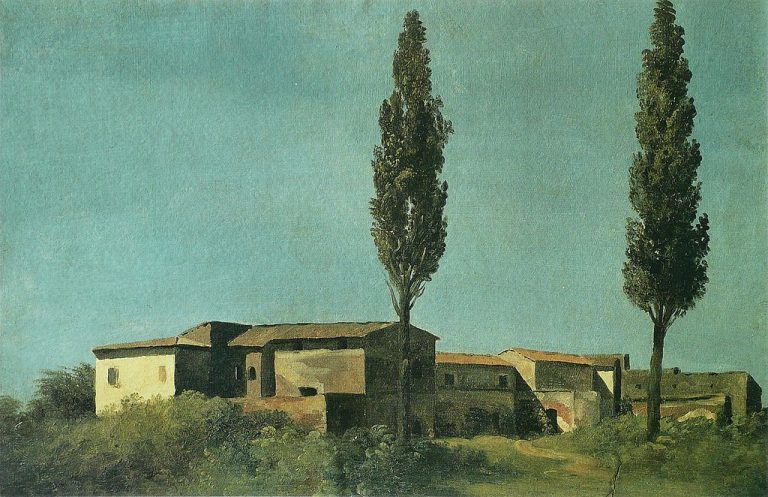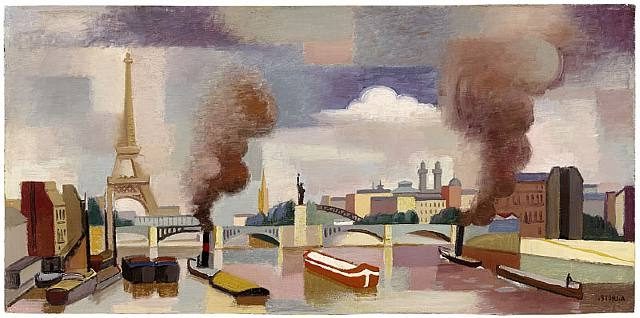John Atkinson Grimshaw: Painter of Moonlit Victorian Landscapes
Born: 6 September 1836, Leeds, England
Death: 13 October 1893, Knostrop, Leeds, England
Art Movement: Romanticism, Aestheticism
Nationality: British
Teacher: Self-Taught
John Atkinson Grimshaw: Painter of Moonlit Victorian Landscapes
Life and Career of John Atkinson Grimshaw
John Atkinson Grimshaw rose from humble beginnings to become one of Victorian England’s most distinctive landscape artists. His journey from railway clerk to renowned painter showcases his determination and unique artistic vision despite facing significant personal and professional obstacles.
Early Life and Education
Born on September 6, 1836, John Atkinson Grimshaw spent his formative years in Leeds, England, during the height of the Victorian Era.
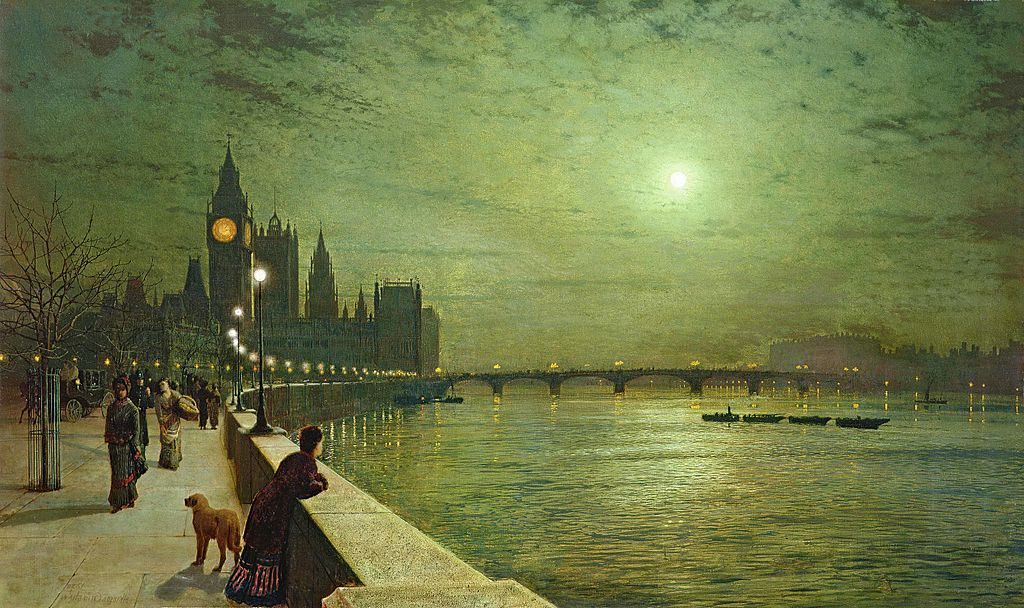
Reflections on the Thames (1880) by John Atkinson Grimshaw
His early education took place at King Edward VI School, where he received classical studies as part of the standard curriculum.
Unlike many successful artists of his time, Grimshaw did not benefit from extensive formal artistic training. His parents strongly opposed his artistic interests, creating significant tension in his early pursuits.
This lack of conventional art education would later become a notable aspect of his biography, as Grimshaw developed his distinctive style largely through self-teaching and observation. Though evidence suggests he likely received some form of artistic instruction during his formative years.
His early drawings revealed a natural talent that would eventually flourish despite the absence of traditional academic artistic foundations.
Path to Professional Artistry
Grimshaw’s professional life began far from the art world. He worked as a clerk for the Great Northern Railway, a stable but creatively unfulfilling position.
Despite facing strong opposition from his parents, he courageously abandoned this secure career to pursue painting full-time.
His transition to professional artistry came without the benefit of formal connections to art institutions. Grimshaw never exhibited at the prestigious Royal Academy, following an unconventional path to recognition.
He developed a distinctive style focused on nocturnal urban landscapes. His moonlit scenes of Victorian cities, docks, and lanes became his signature works, capturing the atmospheric mood of industrial Britain.
By the 1870s, Grimshaw had established himself as a significant British artist. His technical precision and ability to capture light effects in night scenes earned him both critical and commercial success.
Family and Personal Challenges
Grimshaw’s personal life was marked by both joy and significant hardship. He married Frances Hubbard, who supported his artistic ambitions despite the financial uncertainties of his chosen profession.

The Ironbound Shore (1868) by John Atkinson Grimshaw
The couple established their home in a castle-like residence called Knostrop Hall near Leeds, which reflected Grimshaw’s romantic sensibilities.
Their family life was disrupted by tragedy when several of their children died young.
Grimshaw faced financial difficulties throughout his career despite his artistic success. These pressures intensified when his health began to decline. He contracted tuberculosis, a common and deadly disease in Victorian England.
His religious views also evolved throughout his life, with a notable conversion to Catholicism that influenced both his personal outlook and some of his artistic themes.
Grimshaw died on October 13, 1893, leaving behind a distinctive body of work that continues to be celebrated for its atmospheric quality and technical mastery.
Artistic Style and Influence
John Atkinson Grimshaw developed a distinctive artistic style characterized by his meticulous attention to detail and masterful use of light. His work merged photographic realism with romantic sensibilities, creating atmospheric scenes that captured the mysterious beauty of Victorian England.
Moonlit Masterpieces
Grimshaw’s most recognizable works feature moonlit urban landscapes that showcase his exceptional technical skill. His first moonlit scene, “Whitby Harbour by Moonlight” (1867), marked the beginning of his signature style.
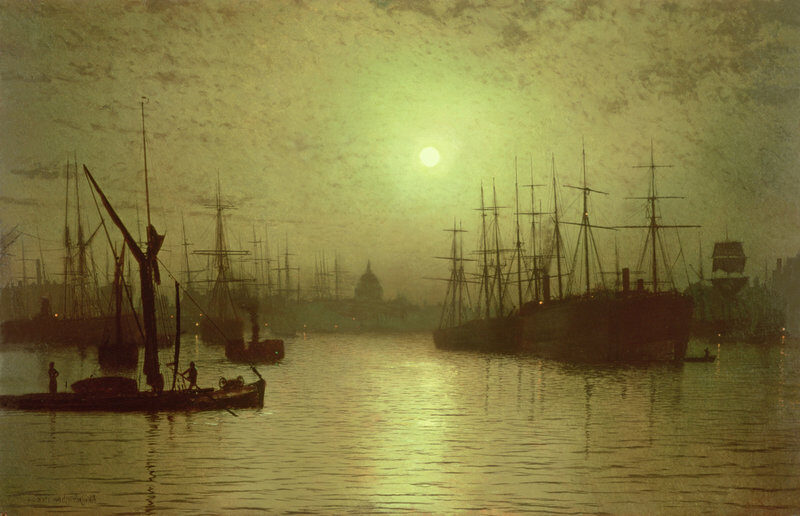
Nightfall on the Thames (1880) by John Atkinson Grimshaw
These nocturnes captured the interplay between natural moonlight and newly installed gas lamps in Victorian cities.
The artist used thin layers of paint to achieve luminous effects, creating an almost photographic quality in his work. His technique included applying paint over a base of moonlit sky, then carefully adding architectural details.
Grimshaw’s precision extended to reflections on wet pavements and the glow of windows in darkened buildings. These elements became hallmarks of his style, making his work instantly recognizable to collectors and art enthusiasts.
Comparisons and Inspirations
Grimshaw’s work shows influences from several artistic movements of his time. His attention to detail reflects Pre-Raphaelite principles, though he was not formally associated with the Brotherhood.
Art critics have noted similarities between his nocturnes and those of James McNeill Whistler, though Grimshaw developed his style independently.
Unlike many contemporaries, Grimshaw did not receive formal training. This allowed him to develop techniques based on personal observation rather than academic tradition.
His work also shows appreciation for the Aesthetic Movement’s philosophy of “art for art’s sake.” Grimshaw focused on creating beauty rather than moral messages, distinguishing him from many Victorian painters.
His cityscapes share some qualities with James Tissot’s urban scenes, though Grimshaw’s focus on atmosphere rather than narrative sets his work apart.
Contribution to Victorian Art
Grimshaw’s place in Victorian art history is unique. He bridged Romanticism and Realism by combining factual accuracy with emotional atmosphere. His paintings documented the changing urban landscape during industrialization while maintaining a sense of mystery and beauty.
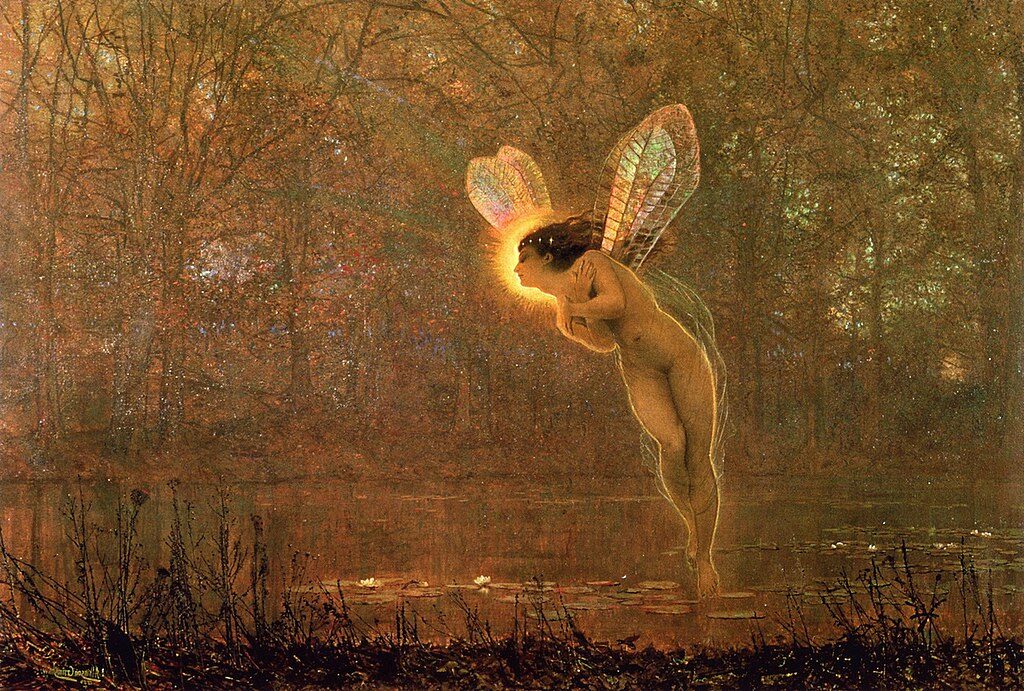
Iris (1886) by John Atkinson Grimshaw
His work gained popularity among the emerging middle class who could relate to his suburban and urban settings. Unlike John Ruskin and the Pre-Raphaelites who often idealized nature, Grimshaw embraced modern cities as worthy artistic subjects.
Working primarily in oil on canvas, he captured twilight and dusk with remarkable authenticity. His technical innovations in depicting artificial light anticipated later developments in photography and film.
Grimshaw’s influence extends to modern fantasy art and cinema, where his atmospheric lighting techniques continue to inspire creators seeking to evoke mood through environmental lighting.
Significant Works and Locations
John Atkinson Grimshaw’s artistic legacy spans numerous locations across Victorian England, with particular emphasis on urban scenes, coastal views, and moonlit landscapes. His distinctive night scenes captured the atmospheric quality of industrial cities and the serene beauty of English waterways.
Urban and Industrial Landscapes
Grimshaw’s urban paintings showcased Victorian cities transformed by moonlight and gaslight. His London scenes depicted areas like Chelsea and Hampstead with remarkable precision. Hampstead Hill appears in several works where he captured the city lights glimmering in the distance.
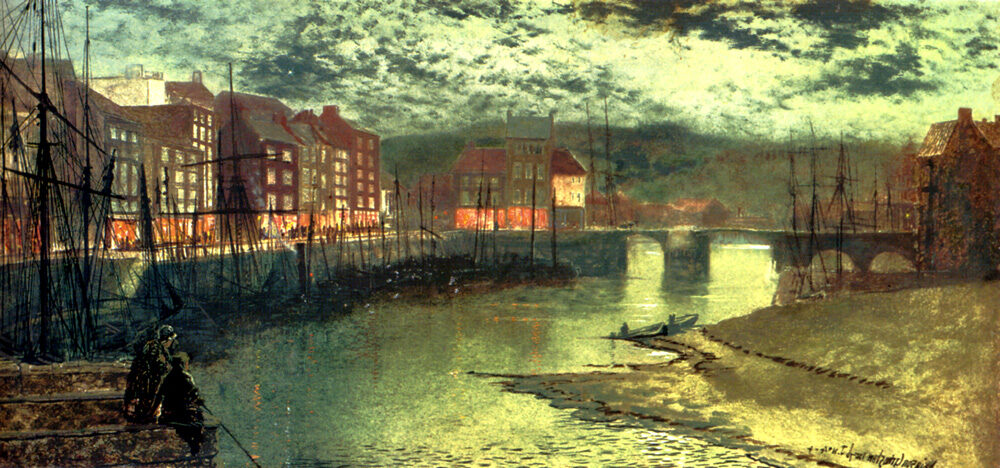
Whitby Docks (1876) by John Atkinson Grimshaw
The industrial landscapes of northern England feature prominently in his portfolio. Grimshaw’s paintings of Liverpool docks show shipping vessels shrouded in mist, while his Glasgow scenes reflect the bustling industrial activity of the era.
His attention to detail extended to architectural elements and atmospheric conditions. Snow and mist often appear in his urban works, creating a dreamy, mysterious quality that became his trademark.
Depicting English Waterways and Docks
Water features prominently in Grimshaw’s most celebrated works. His Thames paintings capture the river under moonlight, with reflections creating a doubled reality of lights and shadows.
The docks of Hull and Liverpool appear frequently, showing Grimshaw’s fascination with shipping and commerce. These scenes typically feature silhouetted ships against glowing skies or lamplight.
Grimshaw painted Scarborough and Whitby harbors with remarkable atmospheric effect. His coastal scenes often depict the relationship between natural and man-made elements, with lighthouses and harbor walls standing against dramatic skies.
The Humber estuary appears in several works, showing his connection to Yorkshire’s waterways. These paintings blend industrial elements with natural beauty in a way that defined his artistic vision.
Legacy in Northern England and Beyond
Grimshaw’s connection to Yorkshire remained strong throughout his career. He lived at Knostrop Hall near Leeds, which appears in several of his paintings and provided inspiration for his domestic scenes.
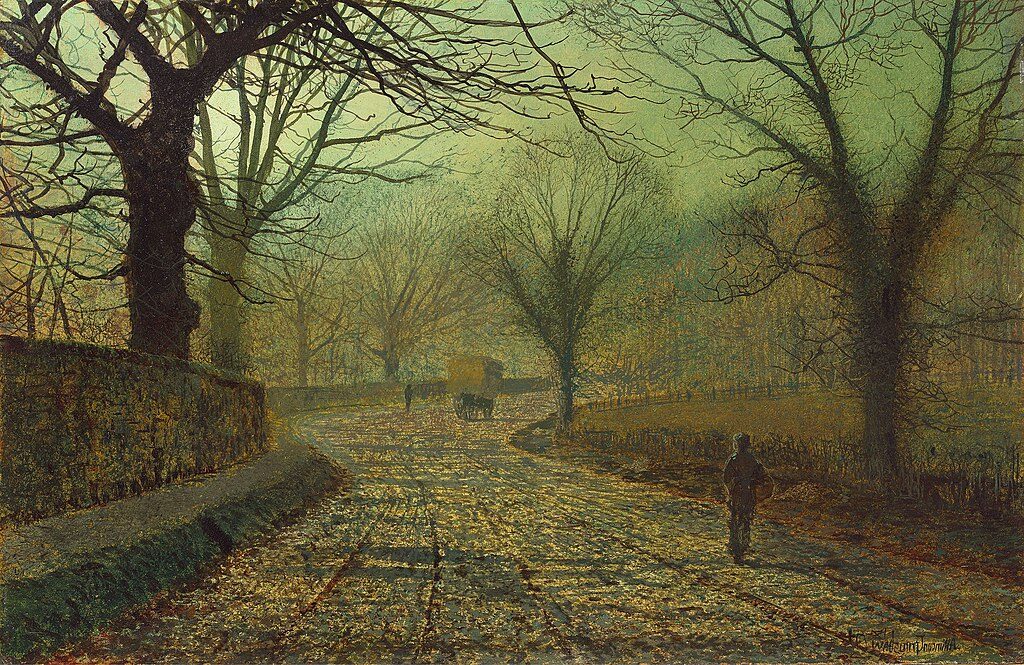
Stapleton Park, Stapleton, Yorkshire (1877)
His works featuring the Great Northern Railway demonstrate his interest in modern transportation and its impact on the landscape. These paintings uniquely capture the meeting of traditional countryside with industrial innovation.
Grimshaw exhibited at the Royal Academy, though less frequently than some contemporaries. His “moonlit pictures” gained popularity despite initial critical hesitation, and eventually became his most recognizable contribution to Victorian art.
Today, his paintings are held in collections across Britain, with significant works in Leeds, Bradford and London. His nocturnal scenes continue to influence artists interested in urban landscapes and atmospheric lighting effects.
Frequently Asked Questions
John Atkinson Grimshaw remains an intriguing figure in Victorian art history. His distinctive nocturnal scenes and technical precision continue to captivate art enthusiasts and collectors worldwide.
What is John Atkinson Grimshaw known for in the art world?
John Atkinson Grimshaw is primarily known for his atmospheric nocturnal urban landscapes. His moonlit scenes of Victorian cities, particularly of Leeds and London, showcase his extraordinary ability to capture light effects.
He developed a reputation for painting detailed cityscapes and harbor scenes illuminated by moonlight or gas lamps. His work is celebrated for its photographic realism and meticulous attention to detail.
Grimshaw’s paintings often feature wet cobblestone streets, misty atmospheres, and the glow of gaslight against Victorian architecture. These elements create a distinctive mood that makes his work immediately recognizable.
Which period did John Atkinson Grimshaw contribute to, and how did he influence it?
Grimshaw was a significant contributor to Victorian-era art, working primarily during the mid to late 19th century. He was active during a time when academic and Pre-Raphaelite styles were prominent.
Although he operated somewhat outside the mainstream art movements, his work embodied Victorian sensibilities and aesthetics. His realistic approach and subject matter reflected the industrialization and urban development of the period.
Grimshaw influenced later artists interested in nocturnal scenes and urban landscapes. His technical approach to depicting light effects in night scenes created a distinctive visual language that other artists would later draw upon.
Can you highlight some of the signature techniques and subjects seen in Grimshaw’s paintings?
Grimshaw’s signature technique involved thin layers of paint applied with extreme precision to create photorealistic details. He often used a camera obscura to achieve accurate architectural perspectives in his urban scenes.
His subjects primarily included moonlit harbors, Victorian streets after rainfall, suburban lanes, and grand country houses. He frequently depicted figures as small silhouettes against architectural backgrounds, emphasizing the relationship between people and their environment.
Grimshaw mastered the depiction of artificial light sources, particularly gaslight reflecting on wet surfaces. This technical skill allowed him to create dramatic contrasts between light and shadow that give his paintings their distinctive atmosphere.
How did John Atkinson Grimshaw’s style evolve throughout his career?
Grimshaw began his artistic career as a self-taught painter, initially focusing on still lifes and nature studies. His early works from the 1860s showed Pre-Raphaelite influences with their detailed renderings of fruit, flowers, and birds.
In 1867, he painted his first moonlit scene, “Whitby Harbour by Moonlight,” which marked a significant shift in his artistic direction. From this point, he increasingly focused on the nocturnal urban landscapes that would become his hallmark.
Later in his career, Grimshaw briefly experimented with interior scenes and fairy subjects. However, he consistently returned to his moonlit cityscapes, refining his technique and cementing his reputation as a master of night scenes.
What are some of John Atkinson Grimshaw’s most acclaimed works, and where can they be viewed?
“Reflections on the Thames, Westminster” (1880) is among his most celebrated works, showcasing his mastery of reflective surfaces. This painting and several others can be found in the Leeds Art Gallery, which houses a significant collection of his work.
“Nightfall on the Thames” and “Glasgow Docks” demonstrate his skill in capturing industrial landscapes. Major collections of Grimshaw’s paintings are held at the Guildhall Art Gallery in London and the Tate Britain.
“Boar Lane, Leeds” (1881) depicts a bustling city street at twilight and exemplifies his urban nocturnes. The Atkinson Art Gallery in Southport and the Yale Center for British Art also display notable examples of Grimshaw’s paintings.
How has John Atkinson Grimshaw’s work been received and evaluated by art critics and historians?
During his lifetime, Grimshaw achieved commercial success but received mixed critical reception. Some critics praised his technical skill, while others considered his work too commercial and lacking artistic innovation.
Modern art historians have reassessed Grimshaw’s contributions and recognized his unique position in Victorian art. His paintings are now valued for their atmospheric quality and as important visual documents of Victorian urban life.
While Grimshaw’s work remains somewhat outside the mainstream narrative of art history, his paintings have a dedicated following. Art markets consistently show strong demand for his works. His paintings achieve substantial prices at auctions.

